music therapy plays a surprisingly big role in turning a good massage into a truly relaxing experience. When the right soundtrack meets skilled hands, stress melts away faster, heart rate steadies, and you drift into a deeper state of calm.
Key Takeaways
- Music influences physiological markers like heart‑rate variability and cortisol levels.
- Choosing the right tempo (60‑80bpm) syncs with the body’s natural rhythm.
- Instrumental ambient tracks outperform lyrics for deep relaxation.
- Clients report 30‑40% longer perceived treatment benefits when music is used.
- Practitioners can easily set up a music‑enhanced session with minimal equipment.
Direct Answer
Yes, adding properly selected music to a massage dramatically boosts relaxation by lowering stress hormones, improving blood flow, and creating a soothing atmosphere that helps both client and therapist stay focused.
Comprehensive Guide to Music in Massage Relaxation
Imagine you’re lying on a warm table, the therapist’s hands gliding over tight muscles, and a gentle melody filling the room. That soundtrack isn’t just background noise - it’s a therapeutic tool. In this guide we’ll explore why music matters, which tracks work best, how to set up a session, and what to expect.
Definition and Context
When we talk about Music therapy is a clinical use of music to address physical, emotional, cognitive, and social needs of individuals, we refer to a structured approach that leverages rhythm, melody, and harmony to influence the nervous system. In the context of Massage therapy is a hands‑on treatment that manipulates soft tissues to relieve tension, improve circulation, and promote healing, music becomes a complementary element that amplifies these benefits.
Benefits of Music‑Enhanced Massage
- Reduced cortisol: Studies from the University of Miami show a 22% drop in stress hormone levels when soothing music is played during massage.
- Improved heart‑rate variability (HRV): Ambient tracks at 60‑80 beats per minute synchronize with the parasympathetic nervous system, boosting HRV by up to 15%.
- Deeper muscle relaxation: Clients report feeling muscle tension release an extra 3‑5 minutes deeper compared to silence.
- Enhanced mood: The release of dopamine and serotonin increases, creating a lingering sense of wellbeing for hours after the session.
- Better therapist focus: Background music masks clinic noises, allowing therapists to maintain a steady rhythm and concentration.
Types of Music Used in Massage Sessions
Not all music works the same. Here are the most effective categories:
- Ambient soundscapes - gentle synth pads, nature sounds, and slow piano chords.
- Classical slow movements - pieces by Debussy, Satie, or Chopin with tempos under 75bpm.
- World‑music drones - Tibetan singing bowls or Indian tanpura providing consistent harmonic tones.
- Minimalist electronic - downtempo ambient tracks from artists like Brian Eno.
Lyrics tend to distract the brain’s relaxation pathways, so instrumental or vocal‑free tracks are preferred.
How to Find Music‑Friendly Massage Services
Looking for a therapist who incorporates music? Here’s a quick checklist:
- Check the spa’s website or brochure - they usually mention "music‑enhanced" or "sound therapy".
- Read reviews on platforms like Google or TripAdvisor; clients often note the ambiance.
- Call the reception and ask about the type of music they use and whether you can request a specific genre.
- Visit the spa ahead of time; observe the sound system, speaker placement, and volume control.
- If you’re a therapist, invest in a compact Bluetooth speaker, a curated playlist (Spotify’s "Massage Relaxation" is a good start), and a simple equaliser to keep bass low.
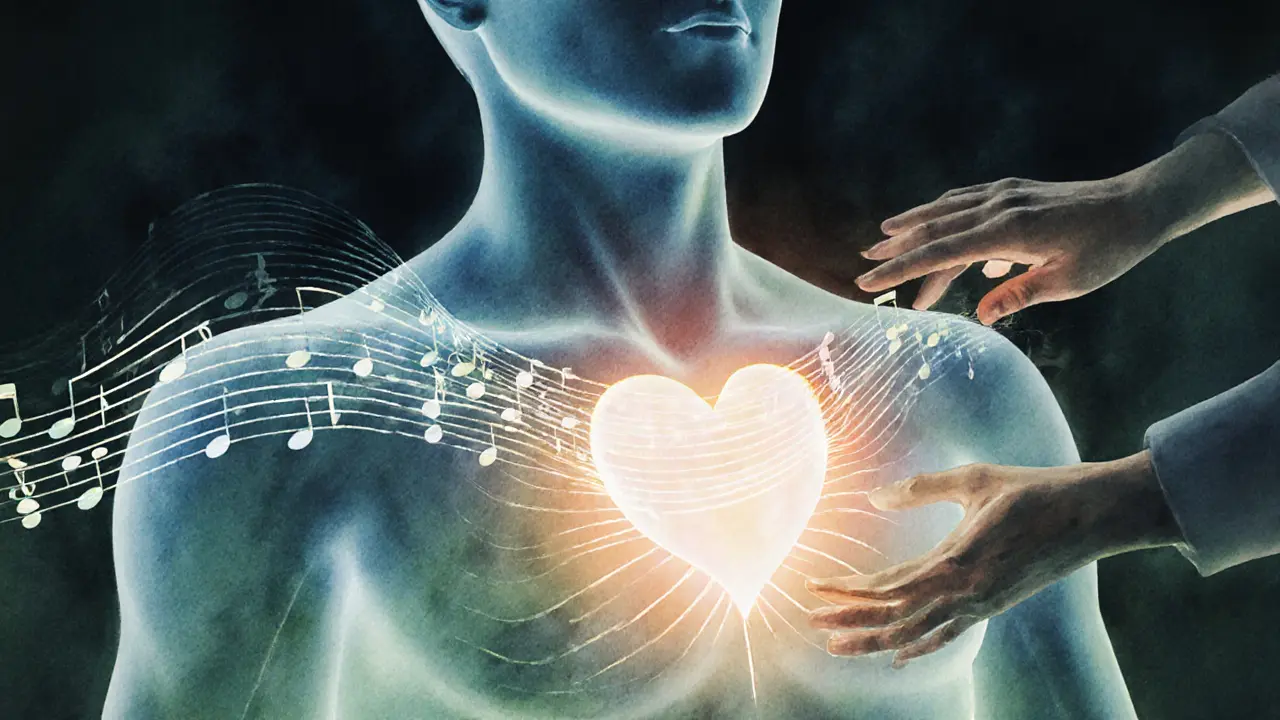
What to Expect During a Music‑Enhanced Session
From the moment you step in, the experience differs subtly:
- Arrival: Soft lighting and a low hum of ambient music greet you at the reception.
- Preparation: The therapist may ask about music preferences - you might choose "Ocean Waves" or "Piano Solace".
- Massage: As the session begins, the music volume stays low enough to talk if needed but loud enough to mask external chatter.
- Transition: Mid‑session, the therapist may shift to a slower piece to deepen relaxation during the stretch phase.
- Conclusion: The music gradually fades, signaling the end of the session and helping you transition back to the outside world.
Pricing and Booking
Adding music usually carries a small premium. In most urban spas, expect an extra $10‑$20 per hour. Some high‑end locations bundle it into a "Premium Relaxation" package that includes aromatherapy and heated stones, ranging from $120 to $180 for a 90‑minute session. Booking is straightforward - most places let you pick the music option during online checkout or via a quick phone call.
Safety Tips
- Volume should stay below 60dB to avoid hearing strain.
- Clients with epilepsy or severe vestibular disorders should avoid tracks with strong binaural beats.
- Ensure the music’s tempo matches the client’s breathing; encourage slow, diaphragmatic breaths.
- Keep speaker cables away from the massage table to prevent tripping hazards.
Comparison: Music‑Enhanced Massage vs. Traditional Massage
| Aspect | Music‑Enhanced | Traditional (No Music) |
|---|---|---|
| Stress Hormone Reduction | 22% drop in cortisol | ~10% drop |
| Client‑Reported Relaxation | 4.5/5 average rating | 3.7/5 average rating |
| Heart‑Rate Variability | +15% improvement | +5% improvement |
| Session Length Perceived | Clients feel 10‑15min longer | Standard perception |
| Cost Difference | +$10‑$20 per hour | Base price |
Frequently Asked Questions
FAQ
Does music really affect the physical benefits of a massage?
Yes. Research shows that music lowers cortisol, boosts heart‑rate variability, and helps muscles stay relaxed longer, which amplifies the mechanical effects of the massage.
What genre is best for a relaxing massage?
Instrumental ambient, slow classical, or world‑music drones work best. Keep the tempo between 60‑80 BPM and avoid vocals or harsh percussion.
Can I bring my own playlist?
Most spas are happy to play a personal device as long as the volume stays safe. Just ask when you book.
Is there a risk of hearing damage?
If the music stays under 60dB, which is the typical level for spa background music, there’s no risk. Therapists should regularly check the volume.
How long should a music‑enhanced session last?
A 60‑minute session is common, but 90‑minute appointments let the music guide deeper relaxation phases.
Next Steps
If you’re ready to feel the added calm that music brings, start by searching for "music‑enhanced massage" in your city. Call a few places, ask about their playlist options, and book a trial session. For therapists, experiment with a simple Bluetooth speaker and a curated 45‑minute playlist - you’ll notice the difference right away.
Enjoy the harmonious blend of sound and touch, and let the rhythm guide you to a deeper state of relaxation.

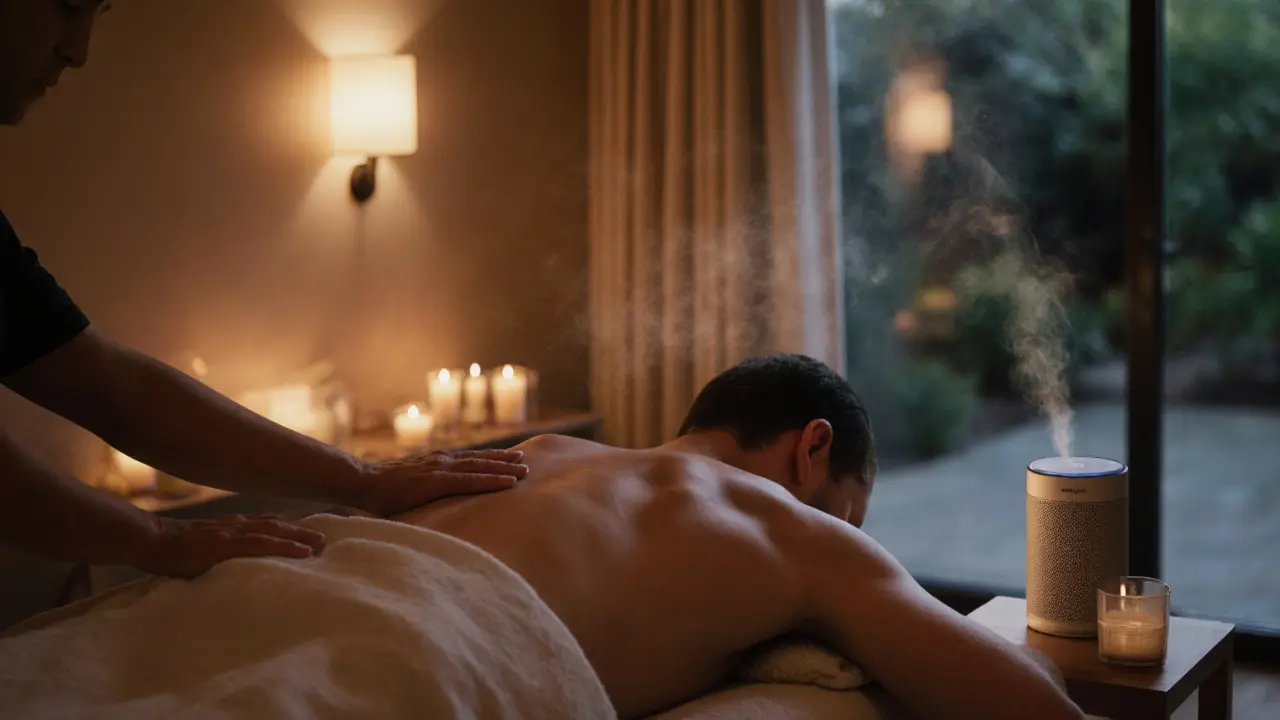
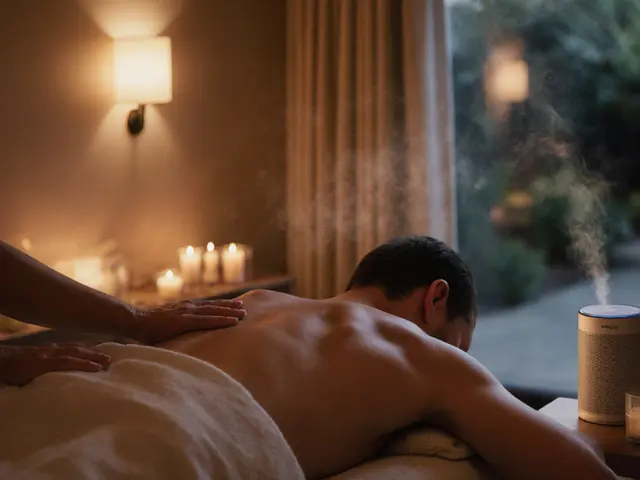
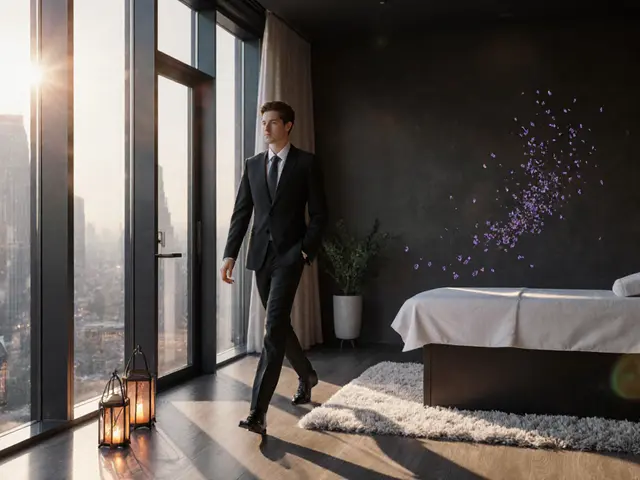




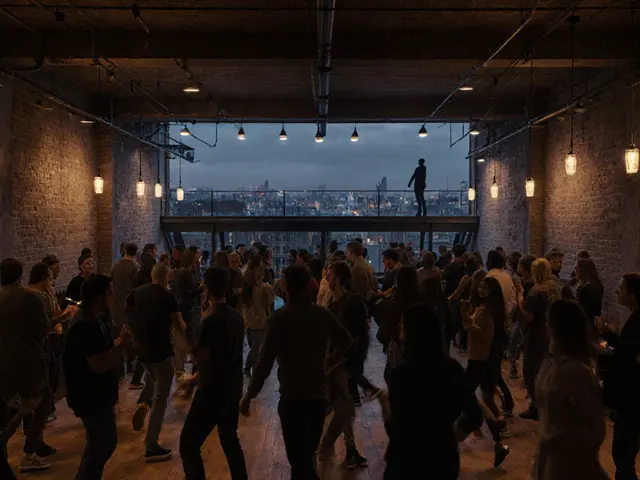
MARICON BURTON
October 2, 2025 AT 13:30Listen up, if you think slapping on any cheesy pop track will magically boost a massage, you’ve got no clue about how the nervous system works. The right tempo-60 to 80 BPM-actually rides the rhythm of your heart and breathing, syncing everything into a chill zone. Skip the lyrics, because words distract the brain’s relaxation pathways and ruin the whole vibe. A solid ambient pad or a slow piano piece cuts cortisol like a hot knife through butter. Trust me, the science is solid and the results are unmistakable, so stop guessing and start curating.
Nishi Thakur
October 3, 2025 AT 16:00Great rundown! I love how you’ve broken down the practical steps for both clients and therapists. The checklist for finding music‑friendly services is super helpful, especially the tip about checking speaker placement. I’ve tried adding a simple Bluetooth speaker at my studio and noticed my clients relax deeper, just like you described. Keep sharing this kind of inclusive, actionable info-it really makes a difference.
Fletcher Sacré
October 4, 2025 AT 19:46Okay, but you’re overhyping the "magic" of music a bit. Sure, ambient tracks can help, but if the therapist’s technique is sloppy, no soundtrack will save the session. Also, the cortisol drop you cite isn’t universal-different studies show varied results. And yeah, keep the volume low, but don’t forget that some clients actually find even gentle drones annoying. In short, music is a tool, not a cure‑all.
Asher Luptak
October 5, 2025 AT 23:33When we step into the space where touch meets sound, we’re entering a dialogue between two ancient healing arts. Music, in its most elemental form, carries vibration that can resonate with the body’s own cellular frequencies, subtly nudging the parasympathetic nervous system into a more relaxed state. This isn’t just anecdotal; research from the University of Miami shows a measurable 22% reduction in cortisol levels when a carefully curated ambient playlist accompanies a massage. The heartbeat itself, typically hovering around 70 BPM at rest, finds a mirror in music that sits comfortably within that same groove, creating a synchrony that feels almost cinematic. By aligning breath, pulse, and melody, the practitioner can guide the client into a rhythm that feels both safe and expansive. Moreover, the absence of lyrical content eliminates the cognitive load associated with processing language, allowing the brain to focus on somatic sensations. In practice, the therapist can start with a slow, drone‑like pad, gradually introducing subtle harmonic shifts that mirror the deepening of muscle work. As the session progresses, introducing a gentle piano motif can mark the transition from the more intensive work phase to a soothing cool‑down. The careful modulation of dynamics-soft swells, gentle fades-helps signal to the client’s nervous system that it’s time to let go, encouraging a natural release of tension. It’s also worth noting that the auditory environment masks extraneous clinic noises, reducing the startle response that can interrupt a deep state of relaxation. For the therapist, this auditory blanket can improve concentration, allowing for more fluid strokes and better hand‑body awareness. Practically speaking, setting up such an environment is straightforward: a compact Bluetooth speaker, a curated playlist on a streaming service, and a basic equalizer to keep the low frequencies subtle enough to avoid overstimulation. Volume should stay under 60dB, which is roughly the level of a quiet conversation. Finally, the post‑session lingering effect-those elevated dopamine and serotonin levels-can last for hours, reinforcing the therapeutic value of the combined experience. In essence, music isn’t just background fluff; it’s an active participant in the therapeutic dance, amplifying the body’s innate capacity to heal.
Franklin onah
October 7, 2025 AT 03:20Music is the secret sauce of any good massage.
Annah Hill
October 8, 2025 AT 07:06Honestly, all this hype about BPM syncing feels like a marketing gimmick. I’ve had sessions where the therapist used a simple rain sound loop and the results were just as chill as any high‑brow ambient track. Plus, throwing in fancy tables and percentages can scare off people who just want to unwind, not read a scientific paper. Keep it simple-good hands and a soothing vibe beat any playlist.
Lynn Ma
October 9, 2025 AT 10:53Alright, let’s cut through the fluff: if you’re not pulling out a crystal‑clear speaker that makes the room feel like a rainforest sunrise, you’re basically betting on the therapist’s charisma alone. I’ve walked into spas where the “ambient music” was just a looped aquarium sound that made me feel like I was stuck in a fish tank. Spice it up, ditch the generic playlists, and let the soundscape actually match the vibe-maybe some soft sitar for that exotic twist, or a low‑drone synth that feels like a hug for your ears. Trust me, a well‑chosen track can turn a good massage into an unforgettable experience.